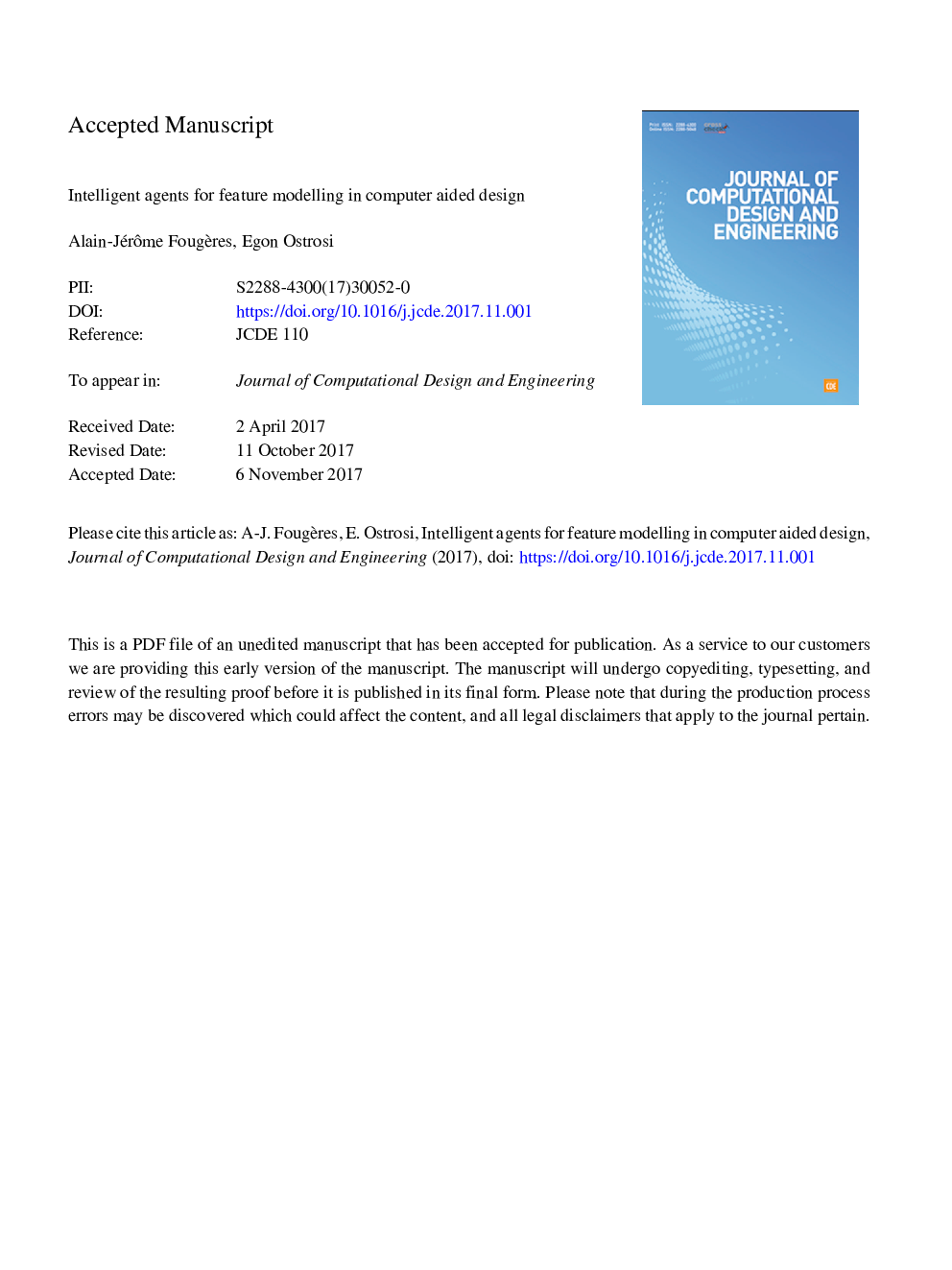| Article ID | Journal | Published Year | Pages | File Type |
|---|---|---|---|---|
| 6877301 | Journal of Computational Design and Engineering | 2018 | 38 Pages |
Abstract
CAD modelling can be referred to as the process of generating an integrated multiple view model as a representation of multiple views of engineering design. In many situations, a change in the model of one view may conflict with the models of other views. In such situations, the model of some views needs to be adapted in order to make all models consistent. Thus, CAD models should be capable of adapting themselves to new situations. Recently, agent based technologies have been considered in order to increase both knowledge level and intelligence of real and virtual objects. The contribution of this paper consists in introducing the intelligent agents in intelligent CAD modelling. The proposed agents are elementary geometrical and topological objects. They incorporate the functions of observation, decision and action, and possess their own knowledge. Agents have the capacity of communication and inference based on the feature grammars. They are modelled as bio-dynamic objects that enjoy the properties of fusion, division and multiplication. Being aware of the context, the proposed agents interact to form potential regional transitory communities, called regions. Being aware of their belonging in a region, agents interact by generating virtual links (virtual extensions). These virtual links produce: (a) fusion of agents, (b) division of agents and c) multiplication of agents. The emerged agents interact with the other agents in a region to recognize each other and to form specific sub-communities, called intelligent features. From a CAD software development point of view, this paper advocates the idea of a new phase of CAD system development based on the agent-oriented programming (AOP) paradigm.
Related Topics
Physical Sciences and Engineering
Computer Science
Computer Graphics and Computer-Aided Design
Authors
Alain-Jérôme Fougères, Egon Ostrosi,
